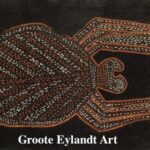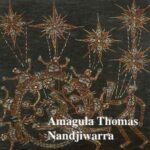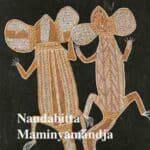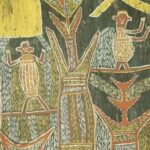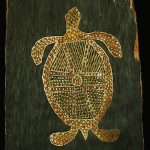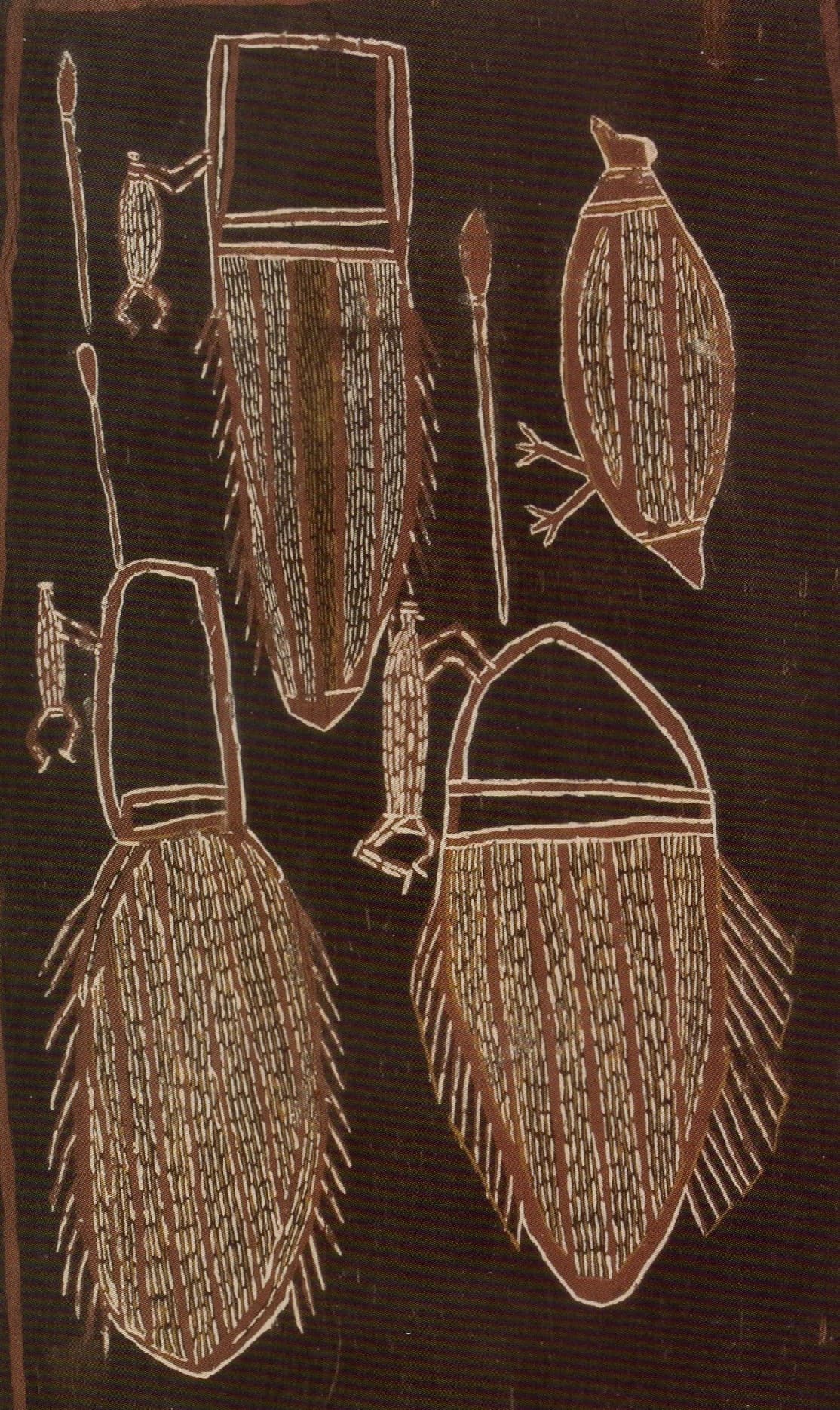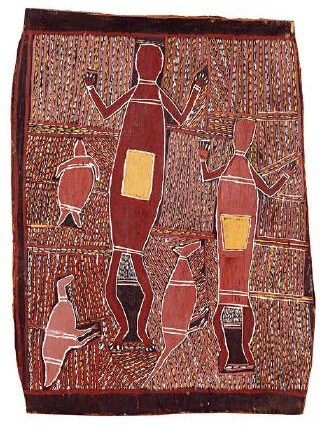Jabarrgwa (kneepad) Warrabadalumba
Jabarrgwa (kneepad) Warrabadalumba painted in a classic Groote Elandt style. Many of his Groote Eylandt paintings center around elements of the East Wind dreaming of which he was a custodian. He also painted several barks depicting the giant brolga dreaming
If you have a bark painting by Jabarrgwa (kneepad) Warrabadalumba please send me an image I would love to see it. If you want to sell it or find out what it is worth email me and attach a Jpeg and a size.
Always keen to see Artworks by this artist.
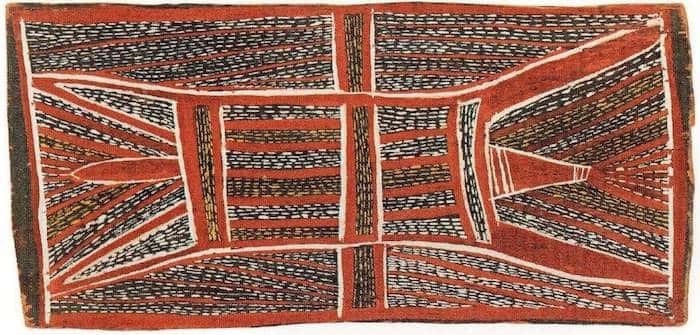
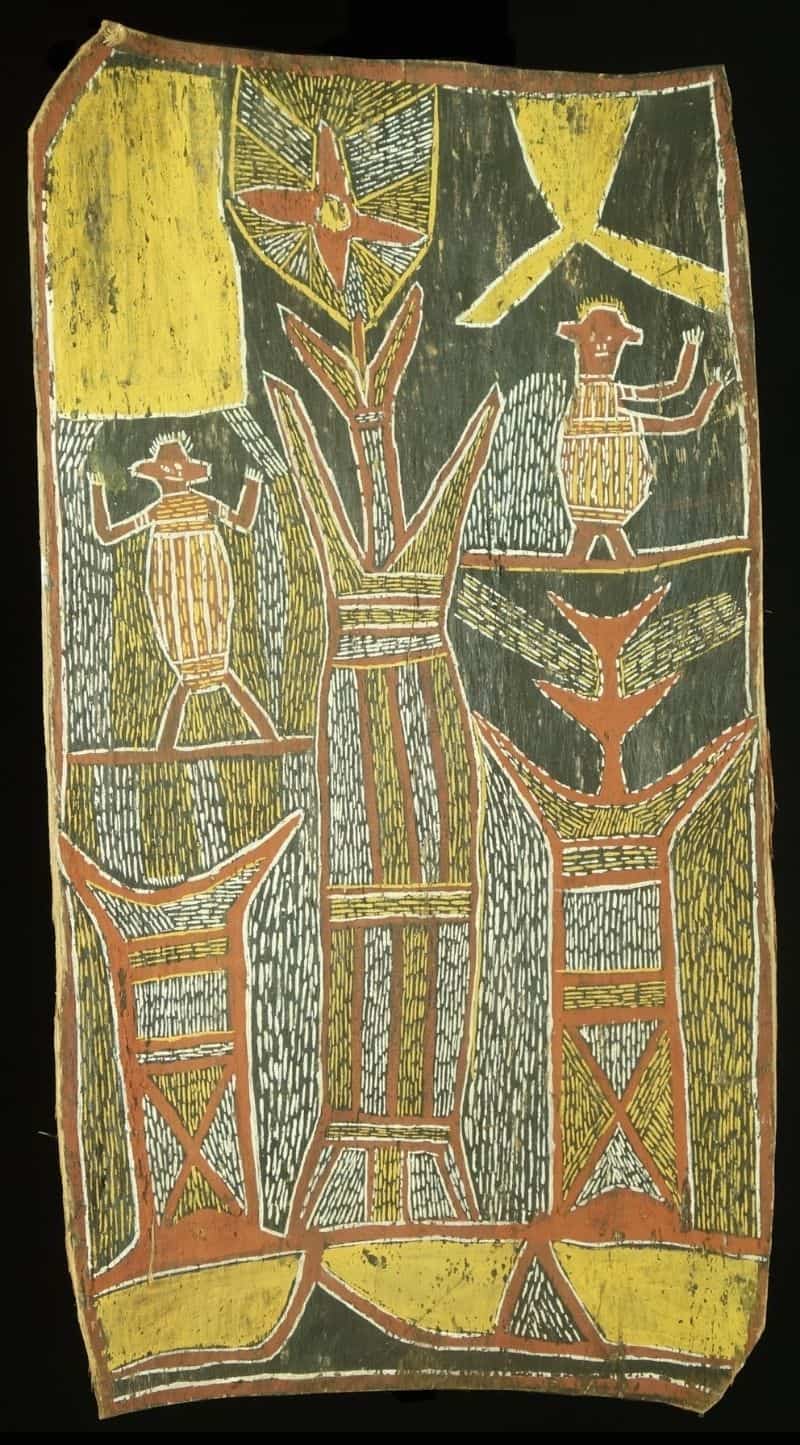
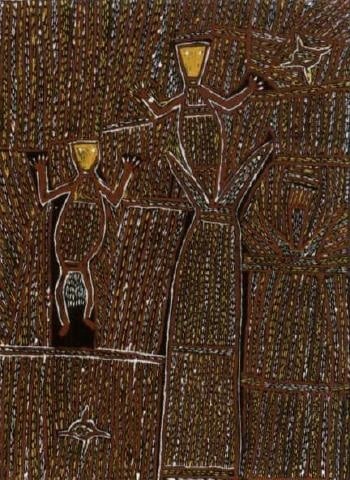
Jabarrgwa (kneepad) Warrabadalumba Style
The majority of Jabarrgwa (kneepad) Warrabadalumba artworks have a black background. His artworks are depictions of traditional legends or songlines that explain the change of the seasons. Jabarrgwa like Nandabitta likes to use all his bark canvas for design. He often framed his later works with a single thick line of pigment. When painting the figurative outline he uses a line of solid color but the infill is dos dashes or even crosshatching.
His human figures tend to have blocky heads and lack a mouth or nose. He sometimes depicts the eyes but with two simple dots. He often gives the humans a sense of movement as though they are dancing at ceremony.
When unsigned, Groote Eylandt paintings by Jabarrgwa (kneepad) Warrabadalumba can be hard to distinguish from those of Thomas Nandjiwarra Amagula or Nandabitta Maminyamandja
South East Wind (Barra) Story Jabarrgwa (kneepad) Warrabadalumba
The seasonal winds had a profound influence on the daily life of Groote Eylandt Islanders. Around December the Northwest monsoon sweeps in from the sea bringing relief from the summer heat. Drenching rains fall intermittently until the land is awash with water. This disperses the game and makes them hard to hunt and fishing more difficult. Around march, the Groote Eylanters hold a ceremony to call on the spirit of the bloodwood tree. The bloodwood tree spirit calls in the East wind that brings back the dryer season making the hunt easier.
The full story of the Barra myth recorded by Louis Allen is in his book Time before morning. The main elements of the story are the Bloodwood tree and the couple who seek out its power to call in the wind.
Jabarrgwa (kneepad) Warrabadalumba painting often depict different snapshots of scenes from this dreamtime story. The bloodwood tree is the main element thick with a fork at the top. Often a married couple are next to or in the fork of the tree.
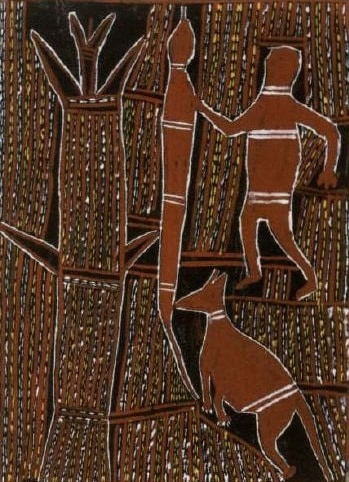
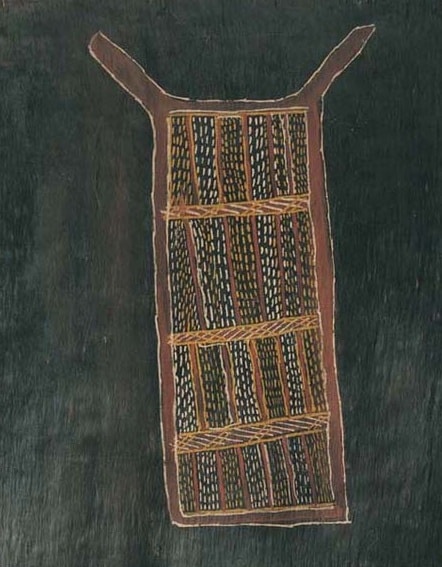
Barra Totem design
Right: Mamariga skin design
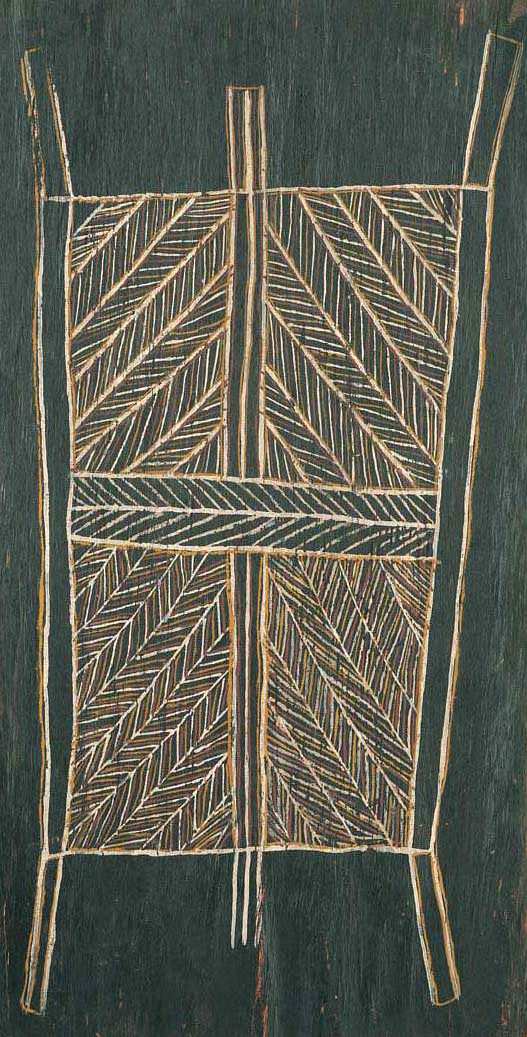
Biography
I can find virtually no information on this artist. If you know anything more about Jabarrgwa (kneepad) Warrabadalumba please feel free to contact me.
I would love to be able to know and share more about the artist’s life.
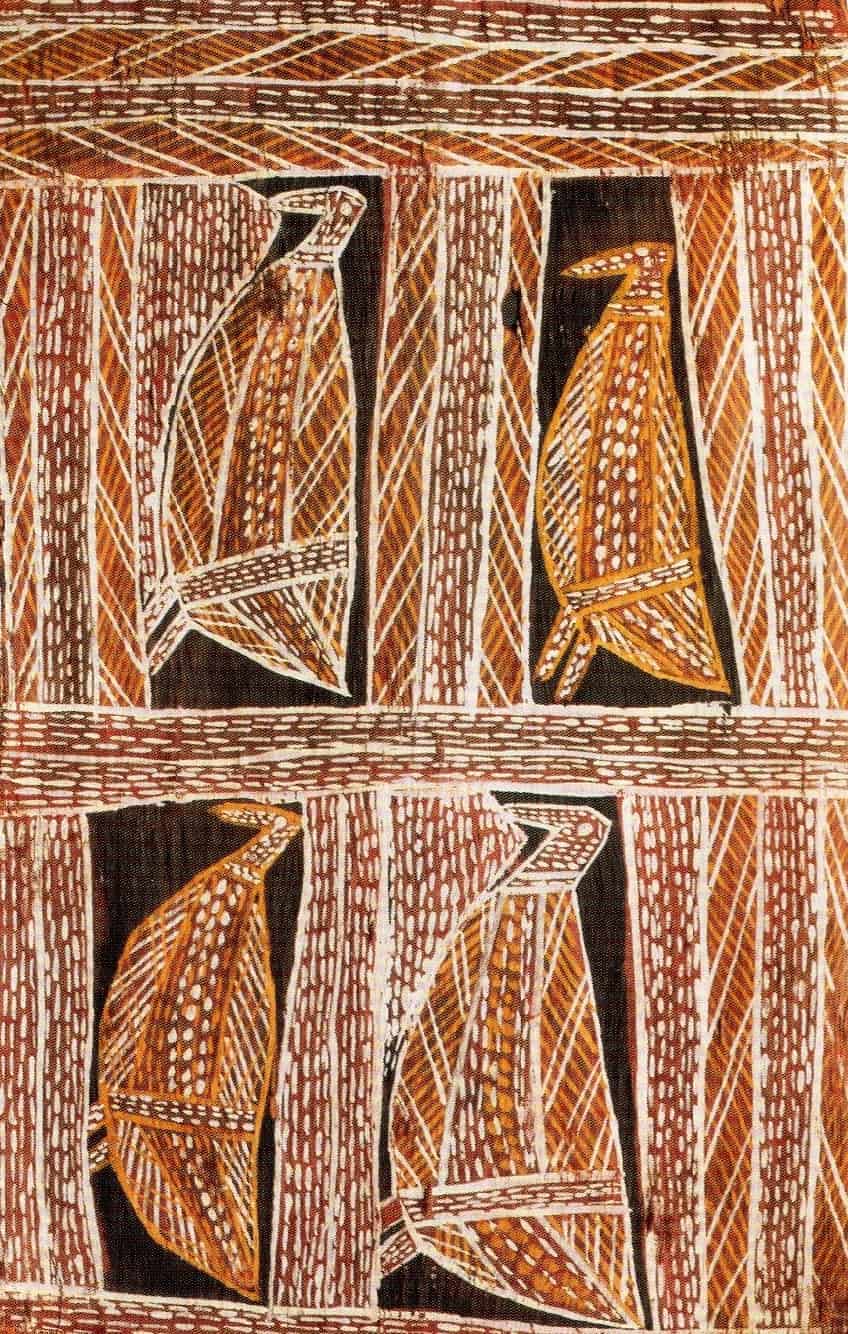
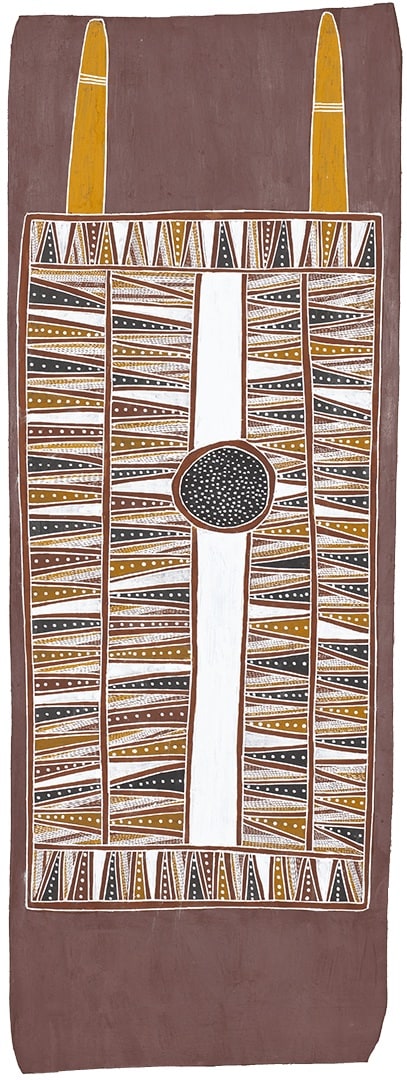
All images in this article are most importantly for educational purposes only.
This site may contain copyrighted material the use of which was not specified by the copyright owner.
Groote Eylandt Art and Artists
Jabarrgwa (kneepad) Warrabadalumba
The following is not a complete list of works. It does however, give a very good idea of this artists style and variety.


